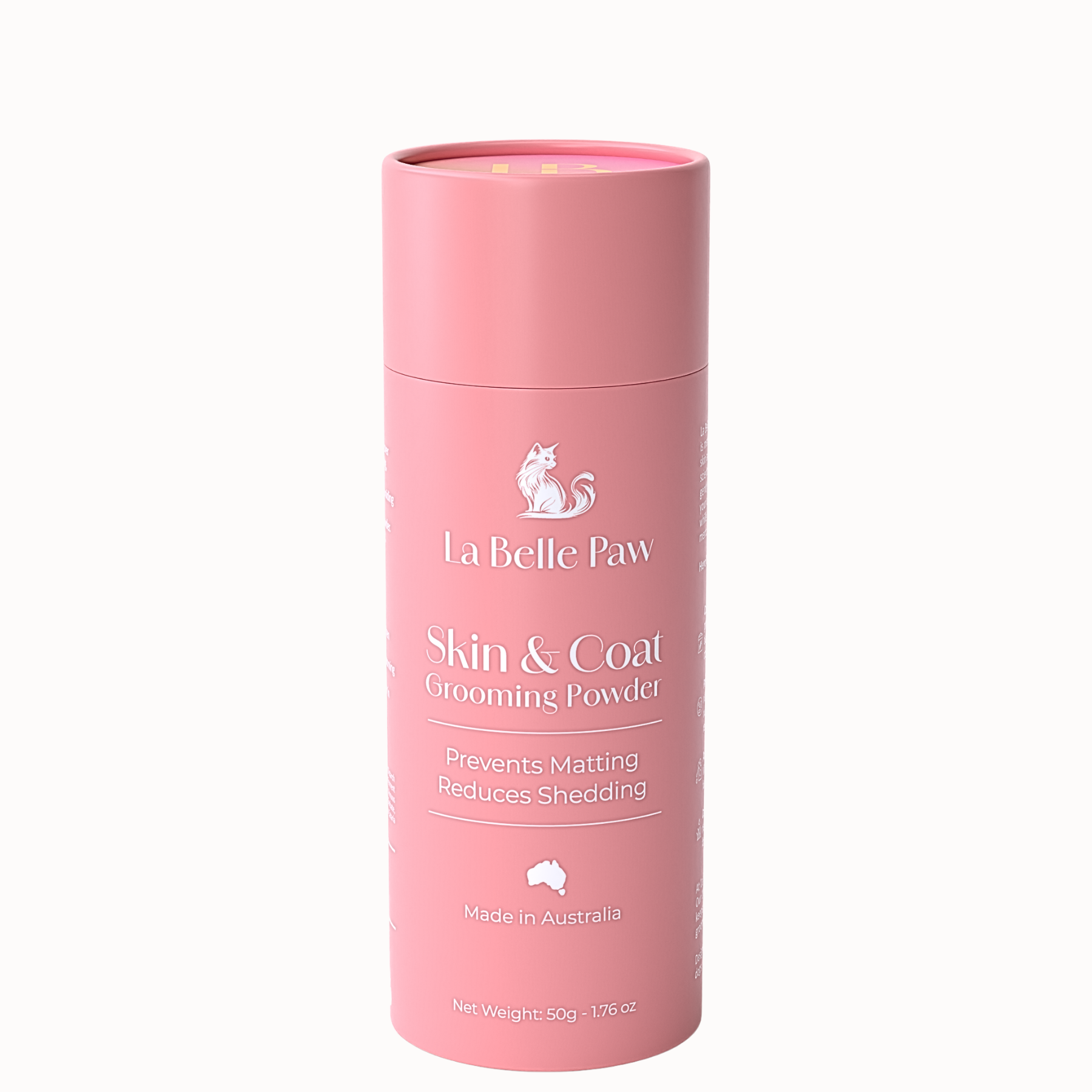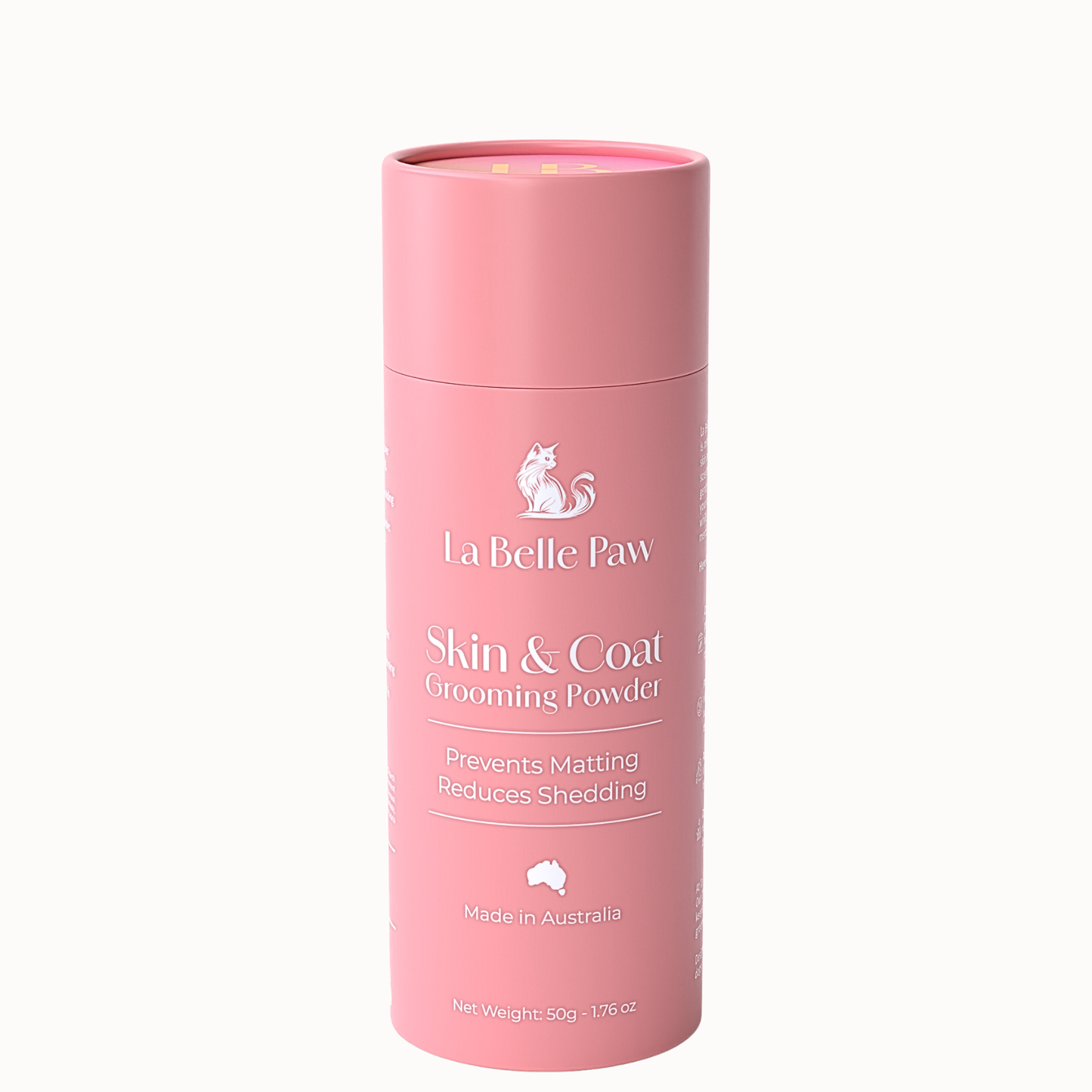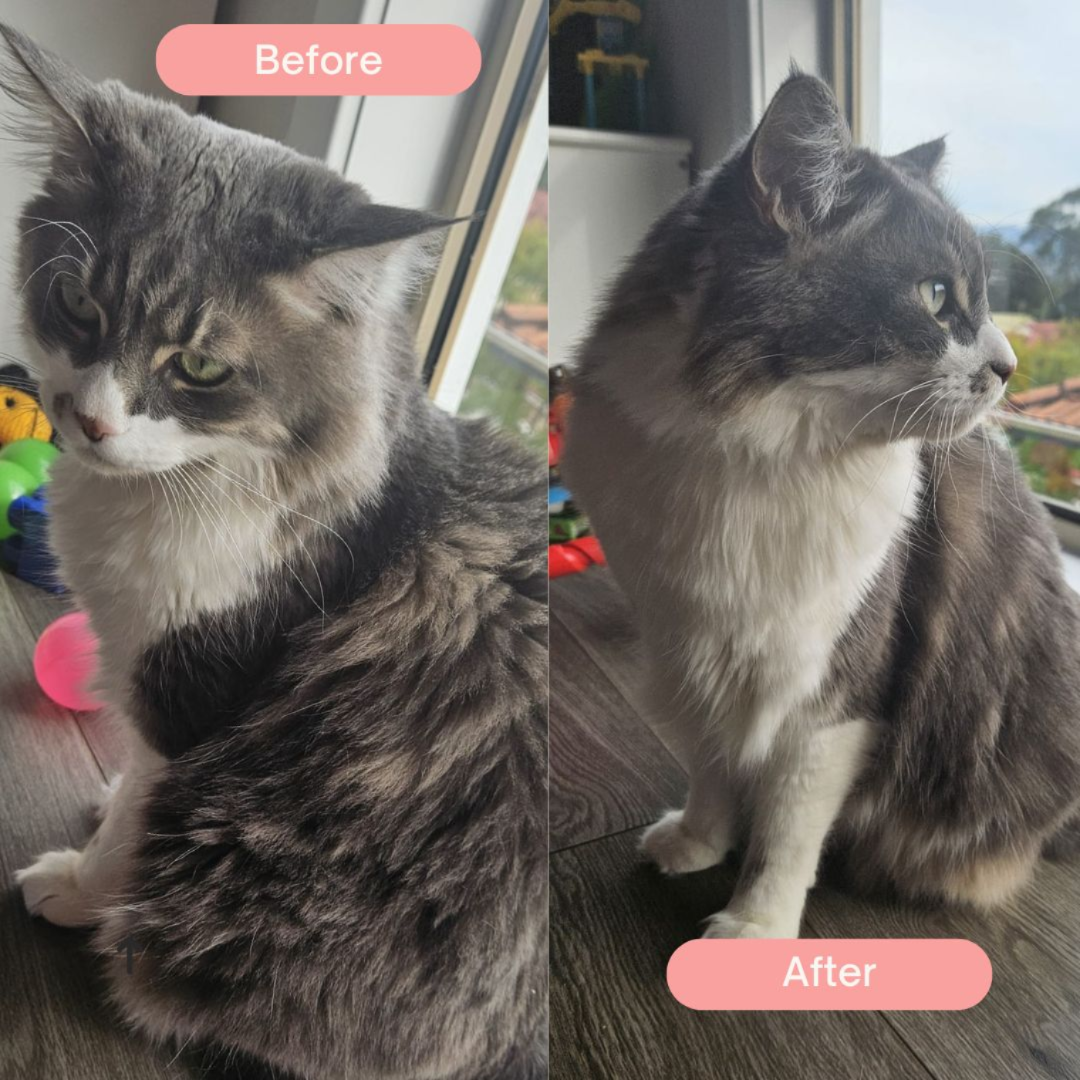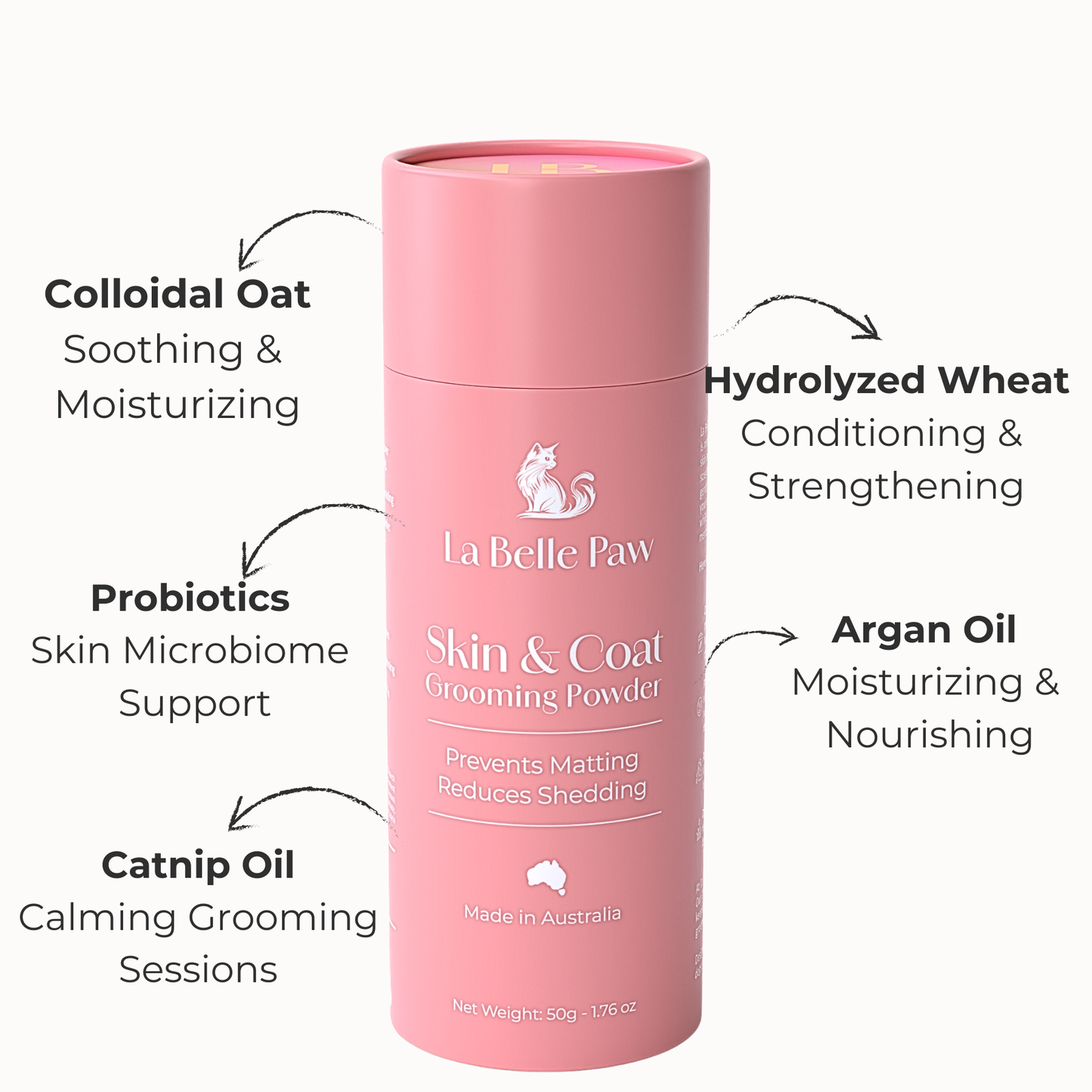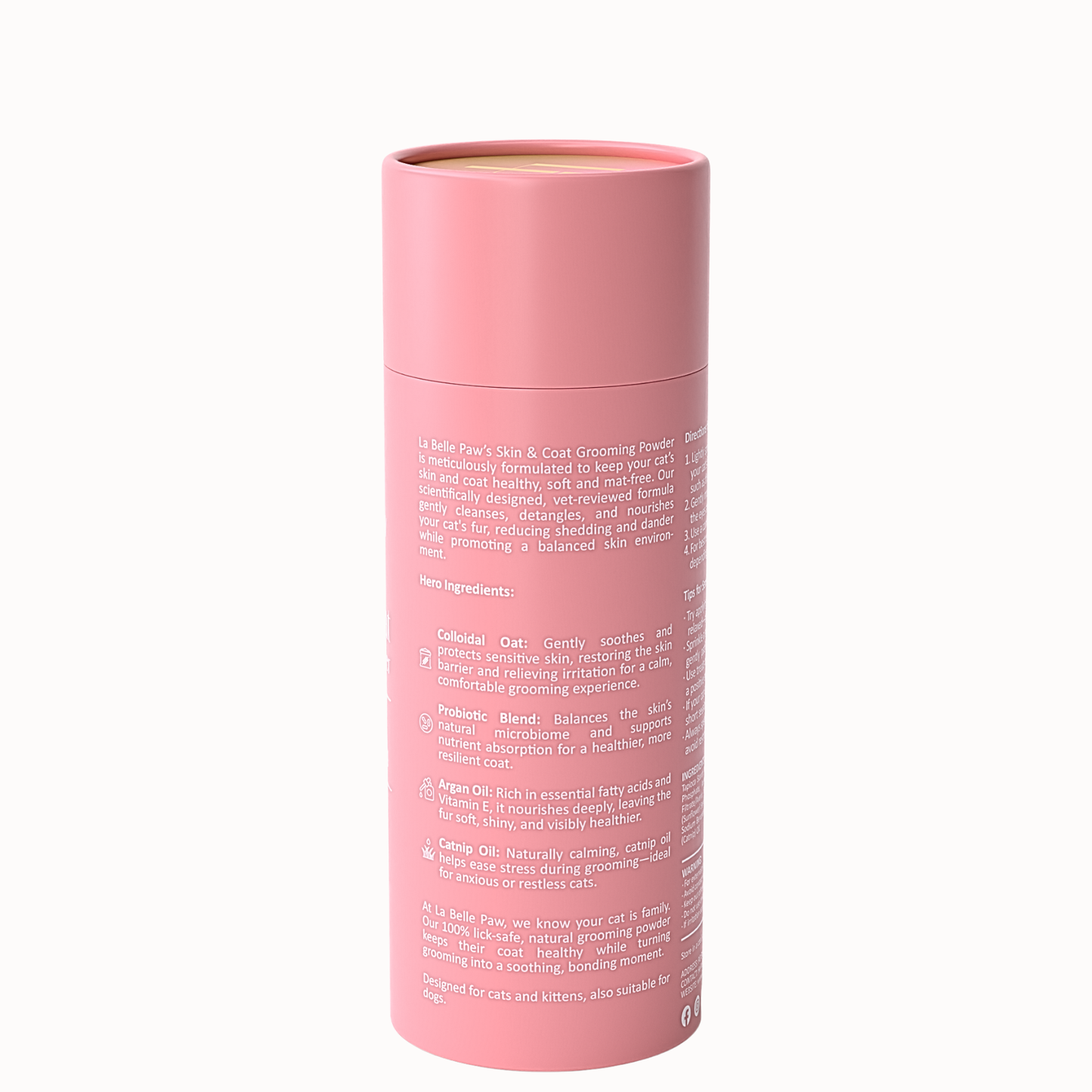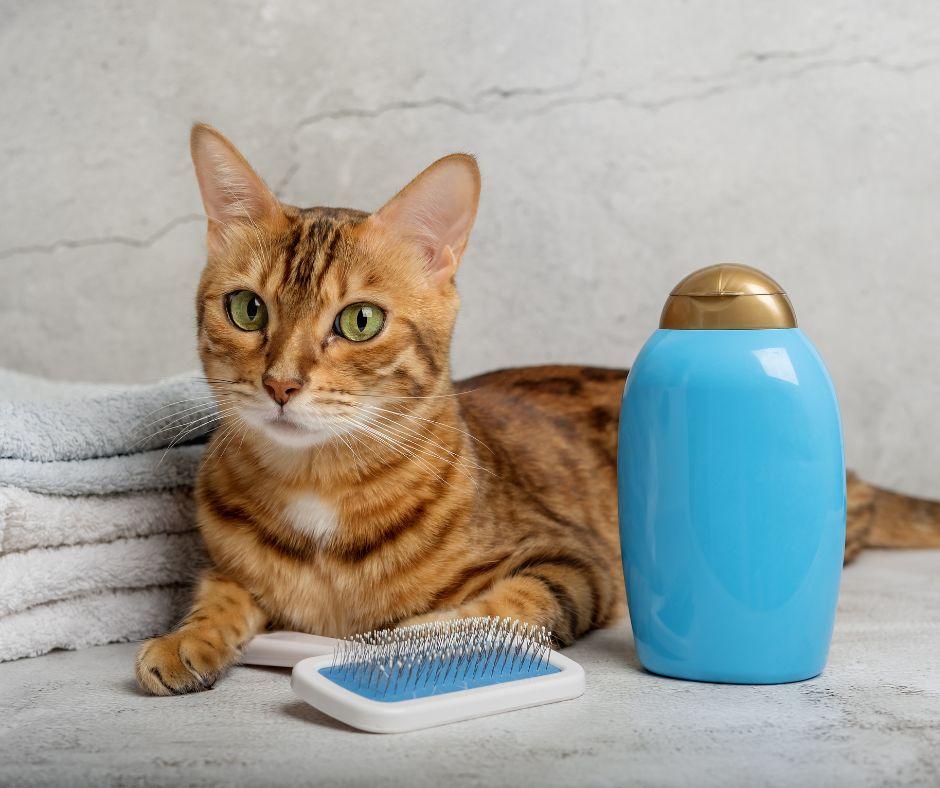
Why You Should Avoid Using Waterless Shampoo for Cats
Share
Why You Should Avoid Using Waterless Shampoo for Cats
Introduction
Waterless shampoos have gained popularity for their convenience and ease of use, particularly for pet owners who want to avoid the hassle of bathing their cats. However, while these products may seem like a quick fix for keeping your cat clean, there are important reasons why they may not be the best choice for your feline companion. Drawing on expert insights from both Anita Kelsey and Whitney Bullock, this blog will explore why you should be cautious about using waterless shampoos for cats and offer safer alternatives.
Why Waterless Shampoos Are Problematic for Cats
Cats have sensitive skin and a unique grooming routine that makes waterless shampoos unsuitable for their long-term health. Here are the primary reasons to avoid using these products:
-
Interference with Natural Grooming Habits:
- Expert Insight: Anita Kelsey emphasizes that cats are fastidious groomers by nature, spending hours each day cleaning their fur. Waterless shampoos can leave a residue on the coat that may disrupt your cat's natural grooming routine.
- Why It’s Harmful: Cats often lick their fur to clean themselves, and if there is leftover shampoo residue, they may ingest it. This could lead to stomach upset, irritation, or worse, long-term health issues if certain chemicals are ingested frequently.
-
Harsh Chemicals in Waterless Shampoos:
- Expert Insight: Whitney Bullock highlights the importance of avoiding shampoos with artificial fragrances and harsh chemicals, which are common in waterless formulas. Cats have delicate skin, and the wrong product can cause irritation or allergic reactions.
- Why It’s Harmful: Many waterless shampoos contain alcohol, parabens, and sulfates, which are known to dry out the skin. This can lead to flakiness, redness, and in severe cases, dermatitis. Cats with pre-existing skin conditions are particularly vulnerable.
-
Waterless Shampoos Do Not Deep Clean:
- Expert Insight: Both Kelsey and Bullock advocate for traditional bathing methods when necessary, particularly for cats with long coats or those prone to matting. Waterless shampoos only surface clean and are unable to remove oils, dirt, and dead skin cells that accumulate in a cat’s coat.
- Why It’s Harmful: Over time, the buildup of these substances can lead to a dull, greasy coat and increased risk of matting, especially in long-haired cats. Poor hygiene can also contribute to skin infections and discomfort.
-
Increased Risk of Ingesting Harmful Substances:
- Expert Insight: Cats are more likely than dogs to ingest substances from their fur, as they groom themselves meticulously. Kelsey stresses that products applied to a cat’s coat should be non-toxic and safe if ingested.
- Why It’s Harmful: Waterless shampoos, even those labeled as “safe for cats,” may still contain chemicals that are harmful when ingested over time. Prolonged use can result in gastrointestinal issues, including vomiting or diarrhea, and may require a visit to the vet.
Safer Alternatives to Waterless Shampoos
While waterless shampoos are not ideal, there are safer and more effective ways to keep your cat clean without resorting to potentially harmful products:
-
Regular Brushing:
- Expert Insight: Anita Kelsey recommends regular brushing as a natural way to keep your cat’s coat clean and tangle-free. Brushing not only removes dirt and debris but also helps distribute natural oils throughout the coat, promoting a healthy shine.
- Why It Works: Regular grooming sessions reduce the need for frequent baths, especially for short-haired cats that are adept at self-cleaning.
-
Using Cat-Specific Wet Shampoos:
- Expert Insight: Whitney Bullock advises using a cat-specific shampoo with gentle, hypoallergenic ingredients for occasional baths. These products are designed to cleanse thoroughly while being gentle on your cat’s skin.
- Why It Works: Wet shampoos are effective at removing dirt, oil, and dander from the coat, leaving your cat feeling fresh without the risk of harmful residue.
-
Wipes or Damp Cloth:
- Expert Insight: For cats that hate water, both experts suggest using unscented pet wipes or a damp cloth to clean small areas of your cat’s fur. This is a gentle method that avoids the chemicals found in waterless shampoos.
- Why It Works: Pet wipes or damp cloths allow you to spot clean without soaking your cat in water, reducing stress and minimizing exposure to harmful chemicals.
Common Misconceptions About Waterless Shampoos
- “It’s Convenient, So It Must Be Safe”: Just because a product is marketed as convenient doesn’t mean it’s safe. Kelsey points out that convenience often comes at the cost of your cat’s long-term health.
- “My Cat Seems Fine After Using It”: Cats are excellent at hiding discomfort. Whitney Bullock warns that just because your cat isn’t showing immediate signs of irritation doesn’t mean the product isn’t causing harm beneath the surface.
Conclusion
While waterless shampoos may seem like a quick and easy solution for grooming your cat, they pose several risks to your feline's health, from chemical exposure to interference with their natural grooming habits. Regular brushing, proper cat-safe shampoos, and alternative cleaning methods are safer, more effective ways to maintain your cat’s hygiene. Remember, your cat’s health and well-being should always come first, and choosing the right grooming tools and products plays a vital role in ensuring that.

